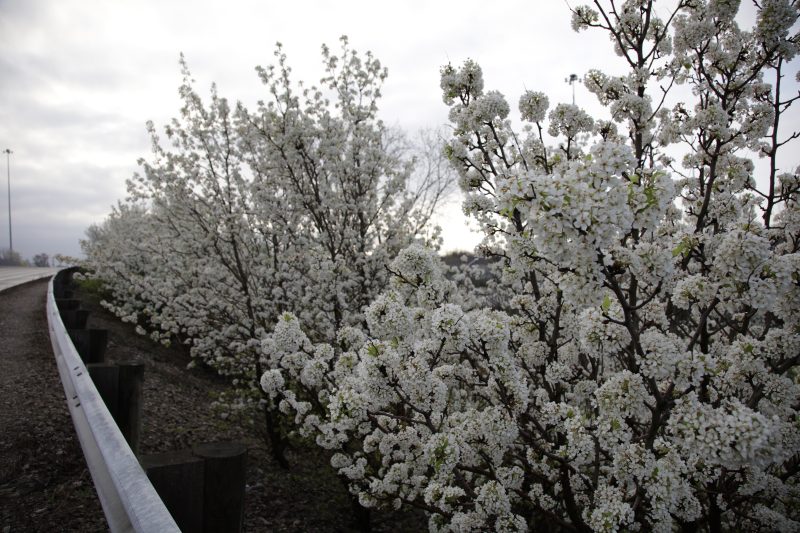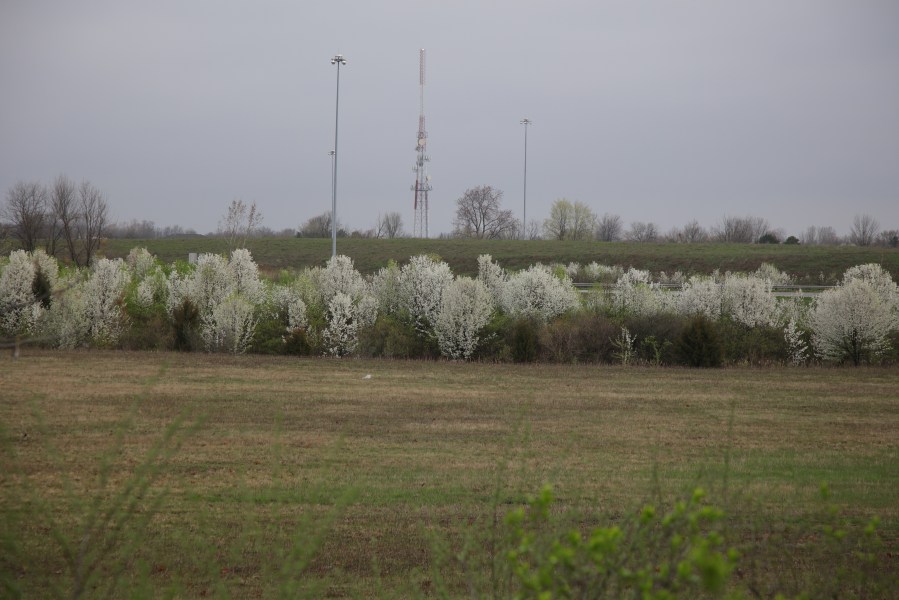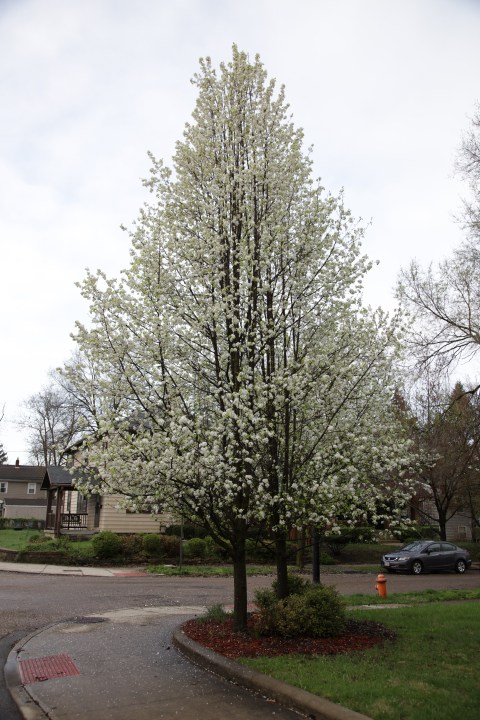COLUMBUS, Ohio (WCMH) – An invasive tree species that is illegal to plant in Ohio has begun to bloom, and will soon fill the air with a distinctive odor that many liken to rotting fish.
Callery pear trees – which come in multiple varieties including “Bradford” pear, “Autumn Blaze” and “Cleveland Select” – typically begin to bloom in the state in late March to early April, according the Ohio Department of Natural Resources.
“They are just starting to bloom just within the last few days,” said Tom Macy, a forest health program manager with the ODNR. “Certainly over the next couple of weeks they’ll become even more obvious as they reach full bloom.”
The species was brought to North America from Asia in the 1900s with the goal of combatting fire blight, a bacterial disease among common pear trees. Fire blight was widespread at the time, and Callery pears are resistant to it.
“The idea was they could possibly breed the two trees together and get a fruiting pear tree that showed good resistance to this fire blight disease,” Macy said. “Ultimately, I don’t think that they had much success in crossing those two species.”
However, the tree did quickly become popular in landscaping due to its adaptability, white flowers and shape. It has also since become well-known for another one of its qualities – its odor. The tree’s blooms typically have a strong aroma, which has been likened to a variety of unpleasant scents, including rotting fish, puke and animal waste.
The tree’s scent is not its only unpleasant quality. The species also spreads aggressively and crowds out native plants. Over time, birds have spread the trees’ seeds from residents’ yards to roadsides and open fields, disturbing native ecosystems.
“It can form a super dense thicket of just pure Callery pear and it can be so thick that people can’t even really walk through it,” Macy said. “It doesn’t have much value for wildlife and especially native insects, caterpillars, that sort of thing. Not much feeds on it.”
Macy also said the tree’s branches are weak and break easily during storms or after a snow, making it undesirable as a street or yard tree.
As of Jan. 1, 2023, the tree is illegal to sell, grow or plant in Ohio. This means nurseries and garden centers are not allowed to sell the trees and homeowners and landscapers cannot purchase or install them.
Ohio is not the only state to ban the Callery pear tree; Pennsylvania and South Carolina have enacted similar bans. The tree is known to be present in 38 states, according to the Minnesota Department of Agriculture.
“I would say we’re probably in a pretty similar situation to a lot of our neighboring states and it’s definitely well-established in the Mid-Atlantic and Southern states too,” Macy said. “So we are definitely not alone in that level of infestation of it.”
Tiny hard brown pears appear on Callery pear trees in the fall – while not poisonous to humans, experts do not recommend people eat them due to their unpalatability. After the pears are softened by frost, they can attract European starlings, an invasive bird species that is known for damaging crops and competing with native birds.
Ohioans who have a Callery pear tree in their yard are not required to remove it, but removal is encouraged by the Department of Natural Resources. The agency recommends serviceberry trees, eastern redbuds, American plums and flowering dogwoods as alternatives.














